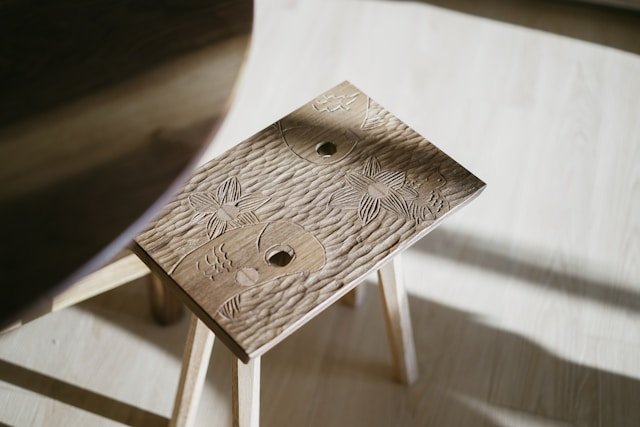The historical past of printing is the historical past of human striving for creativity, innovation and expression of the unspeakable. From the earliest woodcuts to the extra subtle strategies of etching, principping has not solely been capable of evolve artwork, but in addition concepts to unfold and entry to artwork to turn into extra democratized, to achieve new social lessons, areas and cultures. It’s an evolution of artwork that has been dancing along with technical innovation and common cultural traits for hundreds of years.
So if you’re in possession of Print for your wallObserve them whereas we dive deeper into the wealthy historical past of printing, the way it ended up in your partitions and the way it bridge the hole between exclusivity and accessibility.
The origin of printing: woodcuts
The story of your favourite print begins like a woodcut. This was one of many first strategies for transferring photographs on paper and dirt. The earliest instance of this apply dates from the ninth century in East Asia, the place folks lower a picture on a picket block after which utilized ink to the raised areas and pressed the block on paper or mud. It was true that new photographs, concepts, literature, artwork and data unfold. All of a sudden the woodcut discovered its method to Europe within the fifteenth century, the place it was used as an example non secular texts, to embellish devotional books and unfold visible motifs to households who could have by no means been capable of pay a portray.
Due to the apply of carvings, the hole between the holy and the on a regular basis was bridged, making imagery a shared cultural expertise.
Refine know-how
Nevertheless, the demand for finer particulars and higher nuance quickly grew, and it was excessive time that new strategies have been invented to supply extra precision.
Engraving
By the fifteenth century, artists began working with engraving. On this case photographs have been stuffed instantly in steel plates, often copper, stuffed the grooves with ink after which pressed the plate on paper. In distinction to wooden, these metals have been way more sophisticated traces and enabled artists to show extra complicated scenes, textures and even shadow!
It was a medium that was so common that it grew to become much more fame through the Renaissance, when artwork and data flourished hand in hand. By engraving, works of classical antiquity, non secular scenes and scientific illustrations can unfold broad in Europe, which varieties mental and cultural alternate.
Etch
But it surely was not practically over for making prints. One other large leap got here with etchings within the sixteenth century. It’s a method that is determined by acid as a substitute of the direct carving for making photographs. Artists cowl a steel plate with protecting soil, pull by means of designs after which let acid chunk into the uncovered traces. The consequence was a softer, extra flowing high quality than engraving, one which information a way of spontaneity and immediateness.
Etsen was most well-liked by many artists due to his extraordinary expressive prospects. Some masters of ETS have been on the time Rembrandt and Francisco Goya. They pushed the medium additional than merely replica within the empire of excessive artwork. Tonal wealth, dramatic distinction – the historical past of printing was modified eternally.
Past Artwork: how printing tradition and coaching varieties
One of the essential issues that printing did was democratize artwork and make it extra accessible than ever. It was not restricted to wealthy prospects and non secular establishments. Photos have been all of a sudden simply reproduced and distributed over a far, a lot wider viewers. So the visible tradition got here within the homes of merchants, craftsmen and modest households.
And it did not finish with artwork. Printing later performed an important position in increasing literacy and training. As quickly because the strategy of printing within the Center Ages has developed, the printing press shortly emerged, which additional democratized studying and training beneath each social class. Illustrated books and prints can now be shared to assist studying and enhance the narrative of a narrative. Historical past, myths and faith grew to become extra imaginative and extra highly effective.
Trendy Masters: Printing within the twentieth century
Within the trendy period, artists akin to Picasso, Matisse, Warhol and way more have re -defined the chances of the medium, as a result of she dived into tireless experiments with scale, coloration and repetition. The consequence was that the position of their work strengthened as a laboratory for innovation, the place conventional craftsmanship met the unconventional imaginative and prescient of the artists.
And to today there may be by no means an appreciation for the historic strategies. Many modern print makers nonetheless revive woodcuts, engravings and etchings and rejoice the tactile, sensible processes in an ever -digital world. On the similar time, digital artists are usually not combating the development, however mix these age -old strategies with digital applied sciences, creating hybrid works which might be created that custom honoring modernity.
So ultimately the legacy of printing just isn’t actually a narrative about everlasting replica, however extra proof of the everlasting interaction of artwork, know-how and society.
Woodcuts, engraving, etching, printing
Name it what you need. It’s an artwork type that’s each artwork and communication. It enabled artists to share their visions with the general public that to share far past the partitions of courts and church buildings, creating tradition by magnificence and accessibility.
Each part of the evolution of printing reminds us that innovation in artwork is commonly find new methods to steadiness precision with expression and individuality. The legacy of the method stays a residing proof of the concept that artwork, as soon as multiplied, doesn’t lose its power however strengthens the attain, enriches historical past and our current.

